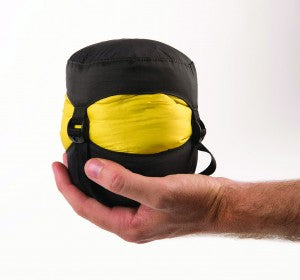My Thoughts on the Sea To Summit Spark III
Having been on a few alpine trips I've become very used to my sleeping kit taking up about a third of my pack. I have justified this in many ways but the easiest way to convince myself it's necessary and not excessive is to call it an 'insurance policy'. Good quality, warm and dry sleeping gear isn't just there to replicate your queen size, pillow-top ensemble back at home. It's there in case everything really starts to hit the fan. Chances are you won't need it to its fullest extend but should something go wrong it's there as a backup. The weather turns nasty, you do an ankle, you start to get a throat infection - all these things may mean that a warm sleeping bag and mat may save your life. So when I hear of Reinhold Messner heading up on an 8000m peak alpine style carrying not much more than a stove and some biscuits am in awe and a little nervous.
The Sea to Summit Spark III
Like most people who decide to get into alpine climbing, I started off taking a lot, and progressively with each trip working out what I could do without or what I could go lighter on. Now it's come time to seriously consider my sleeping bag. I really didn't enjoy the idea of sharing a bag with my climbing partner. He's great and all, but a week without a change of underpants in the same sleeping bag may just push the relationship a little too far. Obviously I could go a less insulated sleeping bag, but there really wasn't a huge deal in wait saving compared to what I was carrying anyway. That's until I got to try out the Sea To Summit Spark III bag. At 625grams for a subzero comfort rated sleeping bag, I was very keen to get my hands on one to test it. But what really impressed when it arrived was the pack size.
I usually would carry a 550gram filled bag for New Zealand and Europe conditions but as the next trip was to be staying in huts, this was definitely going to be overkill so that’s why I was keen to test the Spark. I would normally be hesitant in taking such a light bag but being in huts was a good way to boost my confidence in it. The Spark series of bags is a very snug fitting mummy shape with a hood more like what you would be used to on a down jacket. The zipper on the side also only extends to the bottom of your ribs. You can’t disconnect the zippers and join bags together or any of that nonsense, it’s essentially a down tube. The III model that I've used has box wall baffles throughout and I was amazed at how much loft you could get from 400grams of fill. This is obviously because of the high loft rating of the down, but also the cut of the bag and hood means less area to fill. Needless to say I was hot. I don't think I drew the hood in that whole trip.
Packed and ready to go
After that little reconnaissance into lightweight bags I was really keen to test it properly and the next trip we used a 1kg single skin tent and a Therm-A-Rest Z-lite and bivvied either on the glacier or higher. It wasn't a particularly cold trip but there was a crust each morning so it was definitely going below zero. After that I'm not sure I want to carry anything more. I went prepared to be wearing every layer of clothing including my puffy jacket inside of it, but I didn't bother, I was toasty. The lower comfort limit of -4 I thought was quite conservative.
I'm quite a warm sleeper but judging from those trips I'd be very happy to take this bag on any trips where I'm expecting temps down to -10 and in my pansy version of ‘Messner’ style would push it to -15 maybe with a warmer mat and knowing I'll be wearing my puffy gear inside of it.
The downside of this bag? It's not for everything. I don't think you could own the Spark as your only sleeping bag. I wouldn't want to spend a week car camping at Arapiles with it, or hanging around a base camp for a month on bigger peaks in it. It's a narrow cut and it lacks venting options. However for things to get lighter they need to do one of three things - give subpar performance, greatly reduce durability or be very specialised. And the Spark is specialised. But being so now means you can have the best of both worlds, a fast and light climbing ethic with an insurance policy.
Our bivvy at the base of SW Ridge Mt Aspiring
Review By Matt Eaton. Check out more gear reviews by the Mountain Equipment staff here



